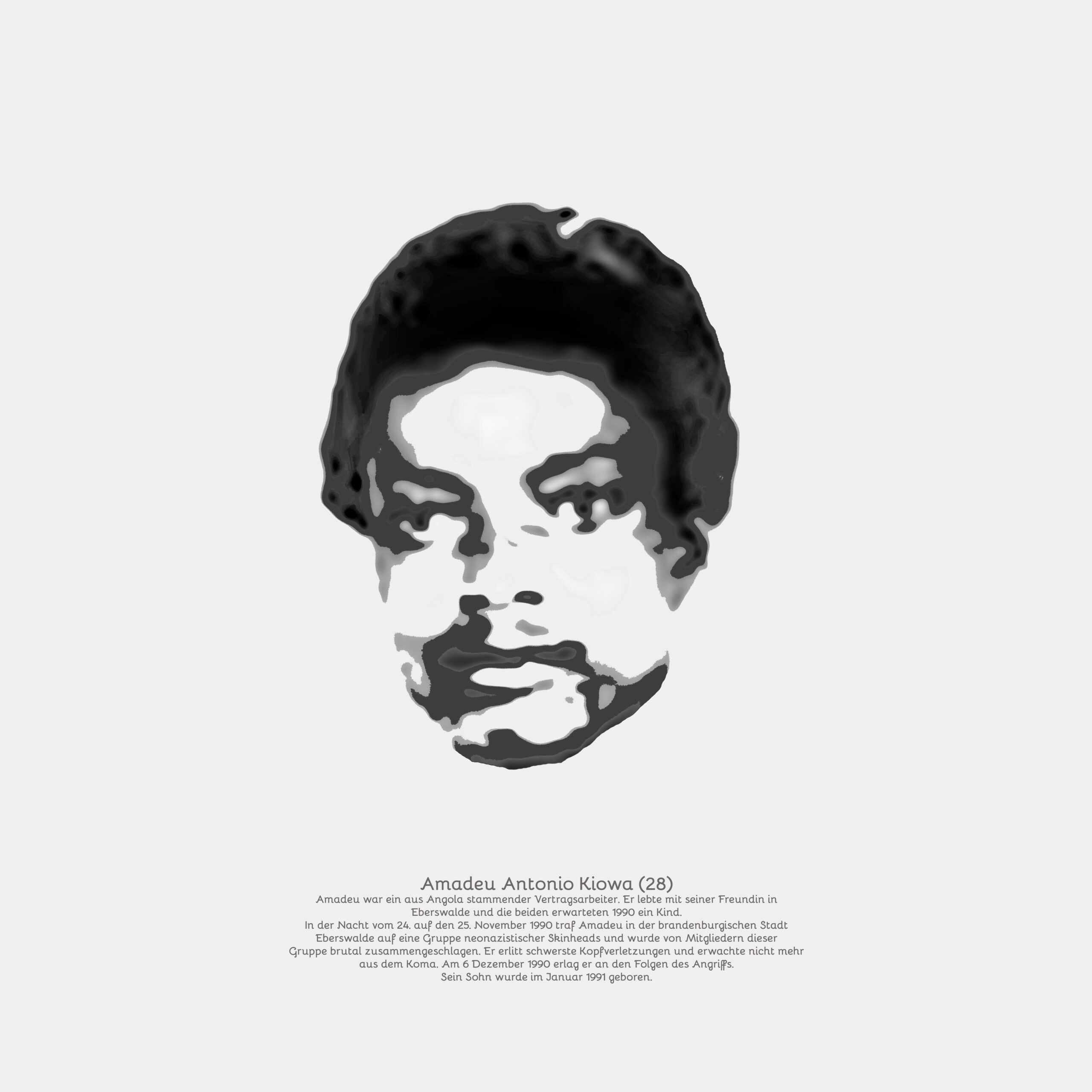Self Profiling
Faces in a mirror

The images show faces: eyes, noses, mouths, ears. Above them, hair. What we cannot perceive are the colors, hair, and skin tones. Upon closer examination of the portraits, we involuntarily see our own face. It seems to merge with the other, as the facial outlines are applied by the Kassel artist Zaki Al-Maboren on a reflective surface.
"This could be you," the image suggests. The 1959-born artist from Sudan calls his mirror portraits "Self-Profiling." They are stereotypical, repeating in distressingly similar ways: black people are brutally murdered by unknown white people. In different places, at different times. Yet, the pattern is uniform. What unites the victims: they were black. Beneath the mirror portraits, biographical information of the depicted individuals can be read. Such as that of Amadeu Antonio Kiowa.
He was a worker from Angola who lived with his girlfriend in Eberswalde. The two were expecting a child in 1990. On the night of November 24th to 25th, 1990, Amadeu encountered a group of neo-Nazi skinheads in the Brandenburg city of Eberswalde and was brutally beaten by members of this group. He suffered severe head injuries and never woke up from the coma. On December 6th, at the age of 28, he died as a result of the attack, just a few weeks before the birth of his son.

A year later, the black man Jorge Gomondai also lost his life. A group of 14 right-wing youth beat him during a nighttime tram ride in Dresden and threw him out of the tram, leading to his death from severe head injuries. Why did Amadeu Kiowa, Jorge Gomondai, and many other victims of racist attacks draw the attention of their killers? Because they were black. If they had been white, they would probably still be alive. The other individuals portrayed here are also people who were brutally beaten and murdered by racist white individuals simply because they stood out due to their skin color.
"This could be you," suggests "Self-Profiling." But is that so? A white person might feel empathy, but can they truly put themselves in the shoes of a black person? They have never experienced the things that black individuals are exposed to in our society due to everyday racism. A white person has never experienced the fear of racist attacks based on their skin color.
The German author Alice Hasters writes in her book "What White People Don't Want to Hear About Racism, But Should Know":

"Racism is a system that was created with the intention of establishing a certain world order. It has been built over centuries and is powerful. Within this system, a hierarchy of racialized groups was established, with whites at the top and blacks at the bottom. So, if someone believes that blacks are naturally superior to whites, that is theoretically a racist thought - but practically quite ineffective. There is no echo chamber for this belief, and it will not be reflected in the world. However, it is different when someone believes that white people are superior to black people. This notion feeds the existing system, and the echo chamber for it is huge. This system is called White Supremacy. When I talk about racism, I mean this effective, systemic racism that has the ability to oppress people. This racism is present everywhere."


After the African American George Floyd was killed during a violent arrest by a police officer in Minneapolis in May 2020, and further brutal killings of black individuals by white police officers shook the public, the "Black Lives Matter" movement gained a new international momentum. The protests and demonstrations are directed against police violence and racism as a system.
With his artistic work, Zaki Al-Maboren refers back to the individual human being and thus to each one of us.
Christina Hein








